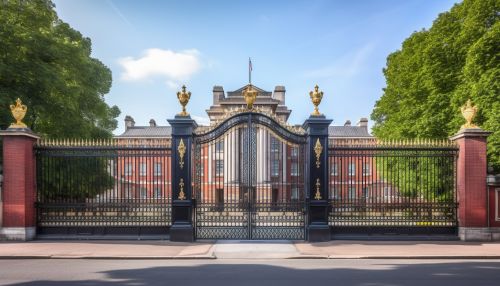Victoria of the United Kingdom
Early Life
Victoria was born at Kensington Palace, London, on 24 May 1819. She was the only daughter of Edward, Duke of Kent, and Victoria Maria Louisa of Saxe-Coburg, sister of Leopold, the widower of Princess Charlotte and future king of the Belgians. The Duke and Duchess of Kent's only child, Victoria, was born at a time when the royal succession was in doubt. The reigning king, George III, had fifteen children, but only one legitimate grandchild, Princess Charlotte, who was second in line to the throne. When Charlotte died in childbirth in 1817, the king's unmarried sons scrambled to father heirs, setting off a race that was won by the Duke of Kent.


Victoria's father died shortly after her birth, leaving her mother dependent on the charity of her brother Leopold and the Duchess's brother, Prince Ferdinand of Saxe-Coburg. The Duchess was protective and ambitious for her daughter and brought her up in a strict and secluded environment, known as the "Kensington System", designed to make the princess dependent on her mother and her mother's adviser, Sir John Conroy. Victoria shared her nursery with her German governess, Baroness Louise Lehzen, who became an important figure in her life.
Accession and Early Reign
Victoria became queen at the age of 18, following the death of her uncle, King William IV, in 1837. Her coronation took place on 28 June 1838, and she became the first monarch to live in Buckingham Palace. Her reign was marked by significant changes in the British political system and society. In 1832, the Reform Act had extended voting rights to middle-class men, and the power of the monarchy was continuing to decline as the power of Parliament increased. Victoria's reign also saw the final evolution of the constitutional monarchy.


Marriage to Prince Albert
In 1840, Victoria married her first cousin, Prince Albert of Saxe-Coburg and Gotha. The marriage was a love match. Victoria proposed to Albert, something that was necessary as she was queen. They had nine children, and their descendants include the royal families of several European countries. Albert became not only Victoria's companion but also her trusted advisor. He played an important role in the affairs of state and was instrumental in organising the Great Exhibition of 1851.
Later Reign and Death
Victoria's later reign was marked by a series of military and colonial adventures, including the Crimean War, the Indian Rebellion, and the Boer Wars. The queen's influence on policy, though diminished, remained significant. She was a symbol of continuity and stability during a period of great change. Victoria's reign, known as the Victorian era, was a period of industrial, political, scientific, and military change, and was marked by a great expansion of the British Empire.
Victoria died on 22 January 1901, at the age of 81. Her reign lasted 63 years and seven months, longer than that of any of her predecessors. She was succeeded by her son, Edward VII.
Legacy
Victoria's reign marked a period of significant industrial, cultural, political, scientific, and military change within the United Kingdom, and was marked by a great expansion of the British Empire. She was the last British monarch of the House of Hanover. Her son and successor Edward VII initiated the House of Saxe-Coburg and Gotha, the line of his father.
